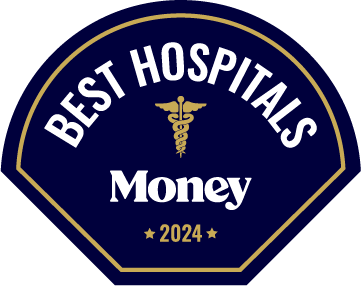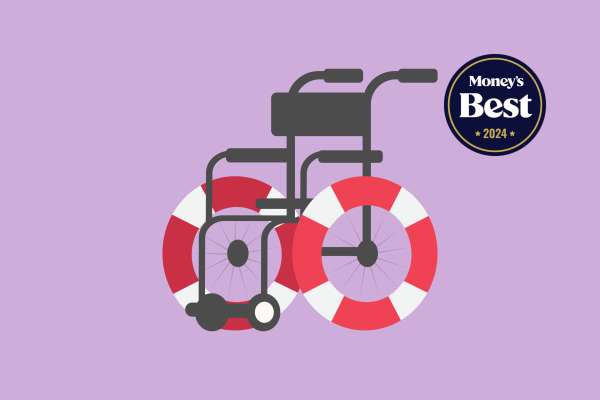Choosing the best hospital can be a complicated endeavor. There are over 6,000 such medical institutions across the United States, and patients often lack the time, energy and expertise to evaluate the best choice, even among the facilities close to where they live.
To simplify the process, Money crunched more than 13,500 data points to create our ranking of the 115 top hospitals in the U.S. In addition, we’ve assembled shorter lists of facilities that stand out for their care in some common specialty areas, including pediatric care, cardiac care and cancer care.
Our process for pruning the list of all hospitals in the country to shortlists of the standouts involves analyses of data from several different sources. Here’s the sequence of steps we take:
- Consider only high-quality hospitals
- Refine the list based on how experienced the hospitals’ doctors are
- Vet the hospitals before we finalize the list
- Rate the transparency of hospitals’ pricing
And, to supplement the steps used for all our hospital rankings, here are the methods that are unique to each list.
Overall methodology
The following methods outline how we crafted our overall list of the 115 best hospitals in 2024. As noted above, for our specialty hospital rankings, we replicated several of these steps but also introduced new data, factors and weighting unique to each list. (See below for more details.)
Consider only high-quality hospitals
[money-jump-link id=”consider”]
Our first step to whittling down 6,000-plus hospitals across the country is to consider only facilities that received a four- or five-star rating for quality from the federal Centers for Medicare & Medicaid Services (CMS). According to CMS, fewer than 1,300 hospitals have a 4-star rating or higher.
The CMS rating (included on the list of hospitals as “federal rating”) is based on five key factors that are weighted as follows:
- Mortality (22%): measures the death rates related to cardiovascular issues, strokes, pneumonia and treatable complications after surgery
- Safety (22%): tracks the rate of infections associated with certain surgeries, IVs and catheters and rates of complications after specific procedures
- Readmission (22%): considers how often some patients are readmitted to the hospital, along with how long they stayed and whether there were unplanned visits for outpatient treatment
- Patient experience (22%): gauges whether patients had a positive experience based on their self-reported ratings of how well their doctors and nurses communicated with them; other factors include whether their bathroom was clean and their room was quiet at night
- Timely and effective care (12%): estimates how quickly patients received care for chest pain or strokes; how long they stayed during an ER visit; percent of health care staff who are vaccinated for flu and COVID-19 and other time-sensitive metrics
Refine lists based on how experienced the hospitals’ doctors are
[money-jump-link id=”refine”]
Money’s main partner in this project was Denniston Data, a health care transparency firm that helped us collect, analyze and rank those statistics. We leveraged a novel way that Denniston Data measures quality care: by identifying high-performing doctors and other providers based on their level of experience with certain procedures.
Each of the hospitals on our list has been assigned an overall letter grade of between A+ and B, the latter being the minimum grade we considered for inclusion, after culling out lower scoring facilities.
Several studies show that the more experienced a physician is with a certain procedure, the better the health outcome for the patient — and by a large margin. Denniston scores more than 1 million providers through its “Provider Ranking System” (PRS). The PRS measures each provider’s experience with a certain procedure or within a specific specialty by analyzing the frequency of treatment and billable costs as reported to CMS through the Healthcare Common Procedure Coding System (HCPCS).
The frequency of the procedure by the provider is then compared to other providers, with each practitioner being given a score of between 0% to 100% based on their experience — where 98%, for example, means only 2% of providers ranked higher.
This approach is more equitable than measures of hospital quality that focus heavily on negative events, including mortality (death) rates, how often patients must be readmitted to the hospital and other bad health outcomes. These factors are crucial to track, and are part of what allows us to make our first cut in the list of facilities, by using the federal CMS data.
But over-focusing on these statistics can unfairly penalize providers and hospitals that operate in areas where the patient population — due to social or racial inequities, as examples — may be more likely to have poor health outcomes regardless of the quality of care they receive. For example, a physician in a high-income suburban hospital may have fewer adverse events treating a largely healthy and wealthy population compared to another physician who is working at a free clinic in a low-income urban neighborhood.
Based on the provider scores, Denniston combines the data to score each hospital based on a weighted average of its practitioners’ scores. This analysis allows the core list of 1,300 facilities that were high-ranked by CMS to be further pruned to 683 hospitals, through use of a measure of each facility called the “Composite Ranking Score” (CRS).
The CRS is a percentile that gets translated into a letter grade. The letter grading system is based on this percentage range:
- A+ is a CRS score of 95% to 100%.
- A is 85% to 94.99%.
- A- is 80% to 84.99%.
- B+ is 75% to 79.99%.
- B is 65% to 74.99%.
- B- is CRS 60% to 64.99%.
- C+ is 55% to 59.99%.
- C is 45% to 54.99%.
- C- is 40% to 49.99%.
- D+ is 35% to 39.99%.
- D is 25% to 34.99%.
- D- is 20% to 24.99%.
- F is below 20%.
Vet each hospital before we finalize the list
[money-jump-link id=”vet”]
To compile our final list of best hospitals, we looked at only the ones with an overall CRS score of at least B+ (75%) or higher. This group of 117 then received individualized vetting by Money staff to be sure that none had red flags that aren’t evident in the data.
Money excluded several hospitals for either scandals where patient care was compromised (such as upheld complaints of sexual assault, racial discrimination or unnecessary treatment) or that the hospital does not offer emergency care or other services commonly expected of a general hospital.
We then vetted the next 30 hospitals on our master list, all with a grade of B or higher. That exercise yielded the addition of another 15 vetted hospitals for a total of 115.
The result is a comprehensive list of quality hospitals staffed by quality physicians and health care providers, hand picked and vetted by Money’s editorial staff.
Rate the transparency of hospitals’ pricing
[money-jump-link id=”rate”]
After consulting health care data experts at Denniston and the nonprofit RAND Health Care, Money analyzed the extent to which a hospital’s publicly listed prices (known as chargemaster prices) accurately align with the revenue the hospital receives from patients or Medicare. In effect, we wanted to know: How likely is it that the listed prices will match what you’re billed after you’re discharged?
We used two ratios to measure this. The first compared the hospital's chargemaster prices and its gross patient revenue, whether paid by uninsured patients or insurance companies; the second ratio is between the gross billed amount and the total amount approved by Medicare. Weighted equally, these ratios were standardized on a 100-point scale and translated into a letter grade based on the same ranges as listed above for the CRS.
The result: a Price Transparency measure. The lower a hospital’s grade on this measure, the wider the gap between its listed prices and what patients have actually paid; the higher the grade, the smaller the difference between the facility’s public prices and the actual bills it issues.
In almost all cases, patients pay less — and often far less — than the publicly listed prices. While this practice is technically discounting, the reality is that many hospitals publicly list exorbitant chargemaster prices that often get negotiated down by insurers, the federal government or the patients themselves. While this practice may help certain patients, it also obfuscates what hospital care truly costs and threatens to keep overall health care costs high.
The price transparency grade does not necessarily mean that a hospital that's graded B+ is cheaper than one with a C. Rather, it means its publicly listed prices are more accurate, which can better help you financially prepare.
Because we judged quality of care and patient experience to be the most important considerations by far in choosing a good hospital, we did not weight price transparency on our rankings. However, we think it is a consideration in choosing a facility – and, perhaps, in whether you negotiate any discrepancies between its listed price for care and the amount you are billed.
Additional methodology notes by hospital category
[money-jump-link id=”sublists”]
Below are details specific to our rankings for speciality care. For these lists, we brought on an additional data provider, Definitive Healthcare.
Best hospitals for pediatric care
[money-jump-link id=”pediatric”]
In addition to our flagship hospital ranking, Money conducted a separate rating of the best hospitals for pediatric care in March 2024.
Note: Based on our methods and the availability of reliable data, Money did not specifically rank children’s hospitals, which are a subset of specialty hospitals. Instead, our ranking is of short-term acute care hospitals that stand out for offering high-quality pediatric care.
While our philosophical and methodological approach largely mirrors the rigorous process laid out above, this sub-ranking differs in a few key areas.
Our approach examines highly experienced specialized physicians — in this case, pediatricians — working at safe, high-quality hospitals. (The pediatric staff’s experience was weighted at 70%.)
We also brought on an additional data partner, Definitive Healthcare, for this sublist (and subsequent ones). Definitive Healthcare’s sprawling hospital database allowed Money to fine-tune our methods for pediatric care.
In addition, we introduced new data and a weighting system to reward facilities with pediatric trauma center designations and high-quality scores from patients and the Centers for Medicare & Medicaid Services. (Pediatric designations were rated 20%; CMS scores were rated 10%.)
Read our full methodology for the best hospitals for pediatric care.
Best hospitals for cardiac care
[money-jump-link id=”cardiac”]
In April 2024, Money conducted a separate ranking of hospitals that provide high-quality heart care.
As with our other rankings to date, the expertise of doctors in the specialty area — in this case, with cardiac care — was paramount. And to even be considered for the list, the hospital had to have at least a four- or five-star quality rating from the Centers for Medicare & Medicaid Services. Denniston helped us compile and analyze these statistics.
Separately, Money relied on data provided by Definitive Healthcare to highlight some cardiac-specific factors, such as a measure of how often a particular hospital performs cardiatric-valve procedures and whether the facility has dedicated coronary intensive-care-unit (CICU) beds.
Money also cross referenced the hospitals with the American College of Cardiology’s database to award hospitals that meet certain data transparency, accreditation or quality standards set by the institution.
Broadly, we categorized these data points into three key ranking factors:
- Cardiac doctor and provider experience (weighted 70%)
- CMS quality and patient ratings (weighted 15%)
- And cardiac focus and accolades of the hospital (15%)
For more details, read our full methodology for cardiac care.
Key sources for our hospital rankings
Our data, research and editorial team included two editors, a lead data reporter, four editorial staffers and our data partners at Denniston Data and Definitive Healthcare. The nonprofit RAND’s health care data team provided supplementary data, guidance and feedback.
Data sources: Denniston Data Inc; Definitive Healthcare
Supplementary data: Agency for Healthcare Research and Quality; Centers for Medicare & Medicaid Services; RAND Health Care






